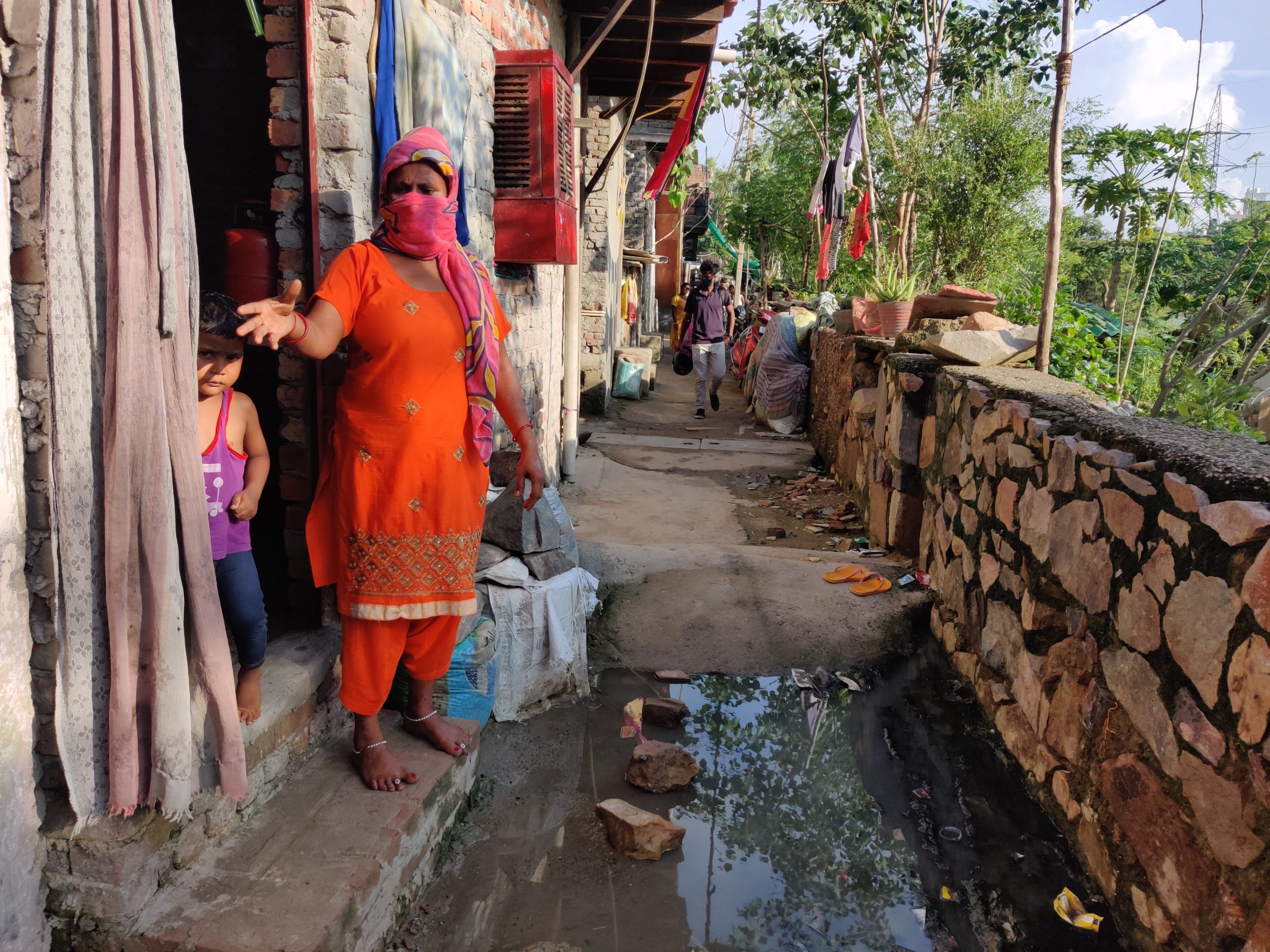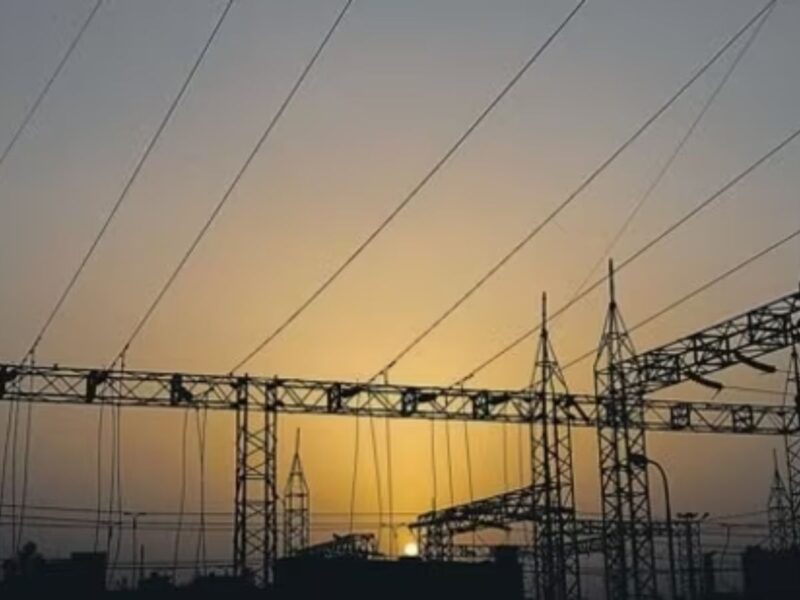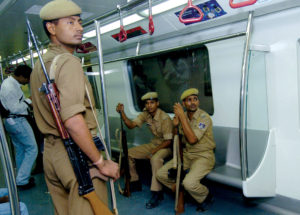The Capital City’s poor drainage makes life tougher for the ones living in JJ clusters — as they are at the receiving end of the hazards caused during monsoon, be it water-borne diseases or waterlogging; with no significant help from the authority
Come monsoon, every year the flooded Minto bridge in Delhi becomes a metaphor of its authority’s ineptitude. But it’s not just the main roads and highways which get swamped; homes, mostly of those living in JJ clusters, are breached by sewage from the already malfunctioning systems. Patriot’s visit to a few such places reveals a recurring apathy of those in-charge to bring a solution to people who can barely make ends meet.
One such place is the slums of Madanpur Khaddar’s Priyanka camp. At our vantage point we spotted what looked like a lake – it turned out to be one made of waste water from the hundreds of homes and from the public toilets provided for those who don’t have the basic necessity under their roofs. All the pipes connected through shoddy systems which leaked onto the narrow alleyways before reaching this end point.
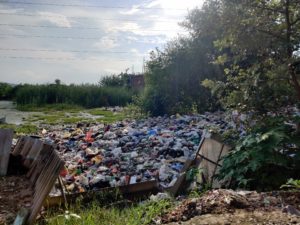
The homes lined up next to it, inevitably face the consequences from a wrongly built and mismanaged system, and the monsoon rains. As we navigated through this area, we met Radha, a former domestic help now living with her children and grandkids in a two-bedroom home. She swiftly opened the door to her home, asking us to come see her toilet which had now been rendered useless, with the waste water backing up, and filling its expanse.
When a few days ago the rains were incessant, she says, the water entered their front room, “kids sat up on the bed, they couldn’t keep their feet down”. Now the traces left behind are the clogged-up toilet, and next to it, in a dry spot some dishes left aside to be washed.
“But no one does anything for us,” a man chimed in, joining the other residents who stopped while crossing over puddles of sewage. “A few of us even went to the (AAP) MLA Amanatullah Khan and told him about this problem. We are always assured by the MLA and the MP (BJP’s Ramesh Bidhuri) that they will fix this issue, but they never do, they take us for fools,” he said, getting irater as he spoke on.
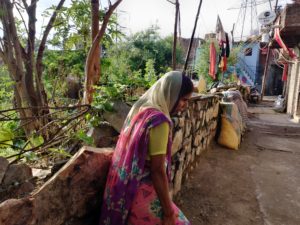
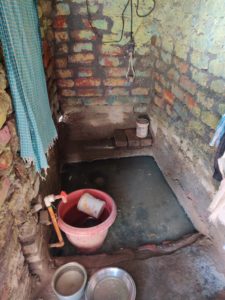
As he continued, a woman asked us to follow her and see what her home looked like. Rekha stays in a one room home, much like others here. This room acts as their bedroom, kitchen, dining and living area. They have no toilet. The space is shared between her and husband, Premchand, and their 16-year-old daughter and 4-year-old son. Their daughter lies bedridden, never diagnosed, but showing signs of neurological and developmental disorder.
She says this made it even harder for her to look things over. A daughter who is unwell, and cannot step out, yet cannot breathe fresh air from inside her home due to the chaos of urban litter outside, Rekha said. Outside her home, a pool of sewage water with people jumping across, trying to avoid stepping into the muck, where we also found mosquito larvae thriving, furthermore there is a gargantuan heap of residents’ garbage piled up in the corner.
Into the sewage muck her four-year-old child brought a toy too, using it as a pond for his boat made out of a bottle cap.
By the sight of it alone, the frustrations of this neighborhood are well understood. But even in terms of disease, it manifests the ill fate of a place where disease is rife and help received is significantly low.
“I have a daughter who is unable to get out of bed. I can hardly keep the door open to let fresh air in because there isn’t any. It’s horrible outside, then the flies and mosquitos come in.” While there’s the threat of vector borne diseases, so is the threat of water borne disease – this was also how she lost her second child, Swati, then her youngest, to typhoid in 2016.
“Swati and Priyanka were very close, she (looking indoors towards her surviving daughter) would even walk a little, come outside the house with her. When Swati died though, it was like the grief put her in shock and her health has deteriorated ever since.”
According to data shared in the Lok Sabha this February, Delhi witnessed a total of 127 and 148 cases of Acute Diarrheal Diseases in 2018 and 2019 respectively. There were also 20 cases each year in 2018 and 2019 of typhoid, while Viral Hepatitis (A & E) saw 180 cases each, in both years.
Five years back, Rekha’s daughter was one of those who succumbed to the infection that spreads through contaminated food and water. “We took her to Safdarjung hospital but I couldn’t admit her, as advised, because Priyanka needed care, I couldn’t just leave her alone. We brought Swati back but her fever did not subside.”
Now Rekha is a full-time carer to her eldest child, leaving her job as a domestic help, while her husband earns a meagre income of Rs 10,000 per month. She thinks it’s futile to go to the authorities for help, “no one listens, and I’m uneducated, I wouldn’t know what to do.”
This helplessness in their words, is echoed in the Priyanka camp, in Ambedkar camp near Mangolpuri, and Yamuna Khadar near Laxmi Nagar. Waterlogged homes of waste pickers in Matiala on September 16, saw desperate messages seeking help from authorities. But the failings of poor drainage systems are not just felt by the JJ clusters. Every year Delhi faces urban flooding, a term which is misnomer, as flood is not due to overflowing of rivers but due to poor drainage. However, Delhi has its own ‘Drainage Master Plan for NCT of Delhi’, which was commissioned by congress government in 2012, but is yet to be implemented.
“Major cities in India are both water-scarce and prone to flooding. Both problems are related: Unplanned construction chokes stormwater drains that carry volumes of rainwater, while rapid urbanization reduces groundwater recharge,” writes Sushmita Sengupta, Senior Programme Manager of Water Programme, Centre for Science and Environment.
Till September 16, Delhi has witnessed 1159.4 mm of rainfall, this is the highest since 1964 and the third-highest ever, according to India Meteorological Department (IMD) data. This has seen Delhi’s perpetual migraine – its poor drainage system cause flooding in almost every area, even main roads and highways.
But the worst sufferers are those living in slums. This is very apparent as one enters the small slum of Yamuna Khader. Sacks of waste pile up as the entrance to makeshift houses, built using tarpaulin, tin and wood. The homes gave the feeling that people were ready to leave any moment authorities came calling –with an order to reclaim the land they had built their lives on.
One such person is Kanchan Devi, who has already shifted homes twice in the same area. “We have been living here for over 20-years,” she says, but authorities razed her house along the Yamuna which had allowed her to do some farming and earn a livelihood.
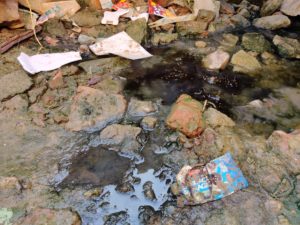
Her home, for which she pays a rent of Rs 1,000 per month, has a roof built with tin. She has no toilet here, neither do the others — using the outdoors instead as their toilet. But this doesn’t bother her, what does is the water logging in front of her home, which attracts and allows mosquitoes into her home.
“Mosquitoes are breeding in this water and danger of dengue and malaria has increased,” Salma, who was listening to our conversation keenly told us that, “this water enters our home.”
She told us that life during monsoon becomes tougher, as they not only face mosquitoes but also snakes. “Snakes come daily for this season”, she says, “We sleep under mosquito-net, that gives us protection, we can’t do more than that.”
However, Salma is not sad with her life, “If we are digging well, we will drink water and if we don’t, we will sleep thirsty. In this slum, there are people who even beg. This is life,” she says.
Manoj Misra, convener of the Yamuna Jiye Abhiyaan, a civil society initiative for the river’s rejuvenation, points to neglect by civic authorities and improper disposal of waste as some of the reasons behind the civic problem.
The former IFS officer says one issue is the pollution caused by the use of polythene, and then the improper disposal of plastic. Then comes he says “the manner in which civic authorities neglected the upkeep of traditional drainage lines – at various places they have vanished, some places they are built over, some places they have been covered.”
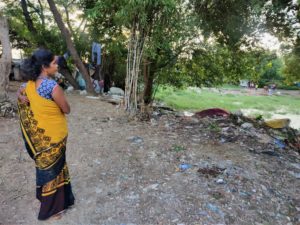
“It is very simple if you don’t allow water to drain — it will come into your home and on roads. All obstructions that we have created to flood water from reaching the drain, that has to be tackled. Places like Delhi, where a lot of natural drainage systems are already there and have undulating terrain, so there is no question of urban flooding.”
All sort of waste, he says, is disposed of in storm water drains which has compromised the carrying capacity. “In principle, storm water drains should be dry, they should carry fresh water only during storm periods. But if you see any city, you’d find that what you call ‘ganda nala’ is a carrier of all kinds of waste but they are not made for waste. They are made for taking excess water out of the city during storms. But how would you explain this?” he asks.
Delhi has an estimated 2,846 drains, covering a combined length of 3,692 KM. The government is working on a drainage master plan to address this issue, CM Arvind Kejriwal recently said, “The drainage system will be further bolstered and made foolproof. Officers should conduct studies and find solutions for each and every storm drain and sewer system. Every gap in the drainage system of Delhi has to be plugged.”
Attempts to reach out to AAP MLA Amanatullah Khan over phone went unanswered. The AAP led Delhi government heads the Delhi Jal Board, under whose jurisdiction the disposal and treatment of sewage comes under.
The PWD department of Delhi Government handles the management of storm water drains. We have sent questions to the office of PWD minister Satyendra Jain, and are awaiting response.
(Cover: Rekha outside her home in Priyanka camp)
(All photos by Sashikala VP)

